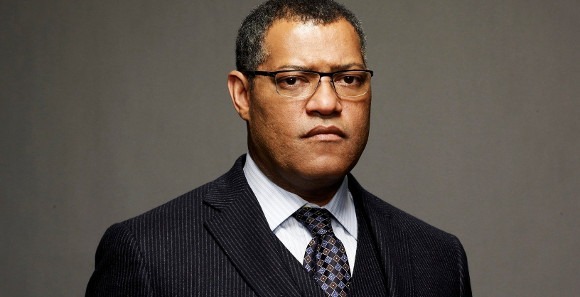Teacher’s Summary
This essay offers a comprehensive analysis of Laurence Fishburne’s versatile career, tracing his journey from a child actor to a Hollywood icon. The student effectively highlights Fishburne’s impactful roles, examining how they have shaped his career and contributed to cinema. The discussion encompasses Fishburne’s performances in various genres, his influence in both blockbuster and dramatic films, and his consistent engagement with socially relevant themes. This analysis not only showcases Fishburne’s range but also inspires future filmmakers to create diverse and meaningful roles.
Grade: A

Laurence Fishburne: A Cinematic Journey Through Versatility and Impact
Introduction
As a film student, I’ve always been drawn to actors who can seamlessly transition between genres while maintaining a powerful screen presence. Laurence Fishburne, born in 1961, embodies this rare quality. His journey from a child actor to a Hollywood icon offers a fascinating case study in the evolution of both an individual artist and the film industry itself. This paper aims to explore Fishburne’s most impactful roles, analyzing how they’ve shaped his career and contributed to cinema’s landscape.
Early Career: From Child Actor to Rising Star
Fishburne’s career began unusually early, with his role in “Apocalypse Now” (1979) at the age of 14. Watching the film recently, I was struck by the maturity he brought to the character of Tyrone ‘Clean’ Miller. This early exposure to Francis Ford Coppola’s directing style seems to have laid the groundwork for Fishburne’s later nuanced performances.
The 1980s saw Fishburne in smaller but memorable roles. His turn as Swain in “The Cotton Club” (1984) particularly stands out. The film’s exploration of race relations in 1930s Harlem feels eerily relevant today, and Fishburne’s portrayal adds layers of complexity to what could have been a stereotypical character.
Breakthrough: The 1990s Renaissance
The 1990s marked Fishburne’s ascent to leading man status, starting with his powerful performance in “Boyz n the Hood” (1991). As Furious Styles, Fishburne delivers a masterclass in subtle authority. One scene that always resonates with me is his monologue about gentrification – it’s a moment where Fishburne’s ability to blend educational content with emotional depth shines through.
“Deep Cover” (1992) and “King of New York” (1990) showcased Fishburne’s range within the crime genre. In both films, he brings a simmering intensity to his characters that elevates the material. As a viewer, you can’t help but be drawn into the moral complexities these roles present.
The Matrix and Beyond: Redefining Sci-Fi Gravitas
Fishburne’s portrayal of Morpheus in “The Matrix” (1999) is, in my opinion, a watershed moment in sci-fi cinema. His delivery of lines like “I’m trying to free your mind, Neo” carries a weight that grounds the film’s high-concept premise. Rewatching the trilogy recently, I was struck by how Fishburne’s performance evolves, mirroring the films’ exploration of fate versus free will.
Dramatic Depths: Stage and Screen
While Fishburne’s blockbuster roles are well-known, his work in more dramatic films deserves equal attention. His portrayal of Thurgood Marshall in “Thurgood” (2011) is a tour de force, showcasing his ability to carry a narrative single-handedly. Similarly, his role in “Fences” (2016) demonstrates his capacity to hold his own against powerhouses like Denzel Washington and Viola Davis.
Conclusion: A Legacy of Versatility
Laurence Fishburne’s career serves as a testament to the power of versatility in acting. From his early days as a child actor to his current status as a respected veteran of the industry, Fishburne has consistently chosen roles that challenge both himself and audiences.
As an aspiring filmmaker, I find Fishburne’s career trajectory inspiring. His ability to bring depth to characters across genres – from gritty realism to high-concept sci-fi – speaks to the importance of versatility in the craft of acting. Moreover, his consistent engagement with socially relevant themes throughout his filmography serves as a reminder of cinema’s potential to spark important conversations.
In an industry that often typecasts actors, especially actors of color, Fishburne’s diverse body of work stands as a counterpoint. It challenges filmmakers like myself to think beyond conventional narratives and to create roles that allow actors to fully showcase their range. As I continue my studies and begin to develop my own projects, I’ll carry with me the lessons learned from Fishburne’s impactful career – the importance of choosing meaningful roles, the power of subtle performance, and the potential for cinema to educate as well as entertain.
Work Cited Section
1. Fishburne, Laurence. “Apocalypse Now.” Directed by Francis Ford Coppola, United Artists, 1979.
2. Singleton, John. “Boyz n the Hood.” Columbia Pictures, 1991.
3. Cohen, Bill. “Deep Cover.” New Line Cinema, 1992.
4.Wachowski, Lana, and Lilly Wachowski. “The Matrix.” Warner Bros., 1999.
5.Wolfe, George C. “Thurgood.” HBO Films, 2011.
6. Washington, Denzel. “Fences.” Paramount Pictures, 2016.
7.“Laurence Fishburne.” Wikipedia, the free encyclopedia. Wikipedia.